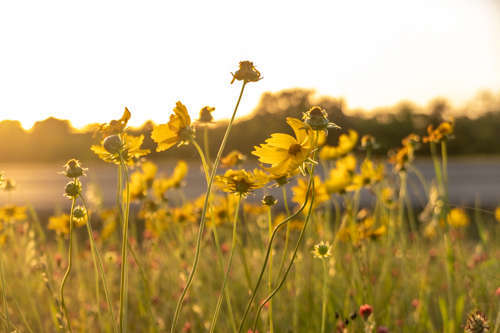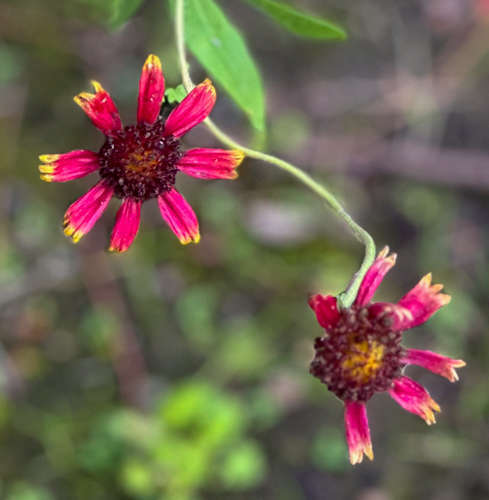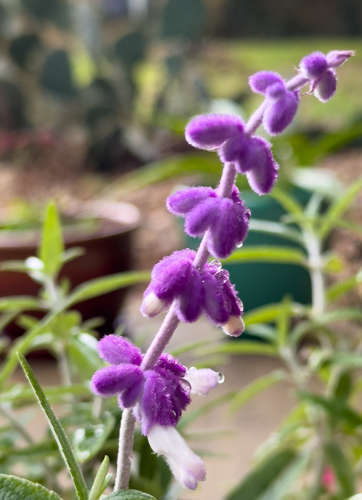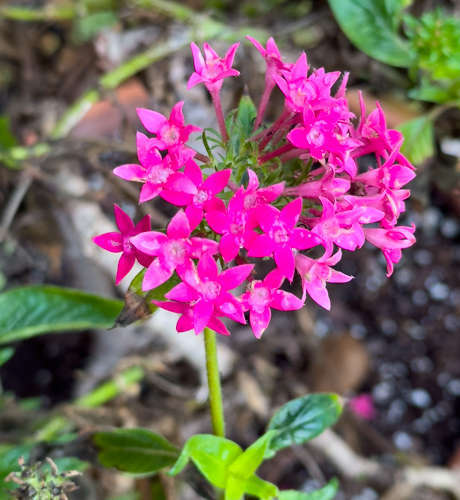
narrow-leaved ragwort (senecio inaequidens)
The first time I saw a queen butterfly (Danaus gilippus) delicately sipping nectar from a bloom in my yard, I felt like royalty had come to visit. She fluttered, regal in her orange and black finery, lingering over the dainty petals of the Blanket flower (Gaillardia pulchella), a plant I had added to my flower bed on a recommendation. I had dreamed of becoming a host to these dazzling guests -- I wanted to see more life in my backyard. And what a transformation it's been!
A small flower garden is an invitation, an offering to nature's tireless workers: the bees, butterflies, dragonflies, and hummingbirds that keep the world in bloom. Without them, the food chain would crumble -- no tomatoes, no melons, no peppers ripening on the vine. But let's set aside the practical reasons for a moment: The real joy of a pollinator garden is the spectacle, the daily drama unfolding in our own backyards.

Blanket flower(Gaillardia pulchella)
A Stage for Wings and Whispers
Plant a handful of flowers, and soon your yard will hum with activity. A metallic green sweat bee (Agapostemon texanus) shimmers in the sunlight as it wriggles into the soft petals of a black-eyed Susan (Rudbeckia hirta). A ruby-throated hummingbird (Archilochus colubris) hovers, darting from coral honeysuckle (Lonicera sempervirens) to flame acanthus (Anisacanthus quadrifidus var. wrightii). Overhead, a dragonfly, perhaps a neon skimmer (Libellula croceipennis), patrols the air like a tiny aerial acrobat.
This is the kind of beauty you don't have to scroll to find. It's live, unscripted, and breathtaking. And the best part? It asks so little of us.

Mexican Sage Bush (salvia leucantha)
No Fancy Tools Required
You don't have to be a botanist or an expert in soil chemistry to grow a thriving pollinator patch. You don't need a sprawling yard or a complicated irrigation system. A single pot of native flowers on a balcony, a small bed tucked into the corner of your lawn, or even a strip of roadside wildflowers makes a difference. Start with Texas lantana (Lantana urticoides), Egyptian Starcluster(Pentas lanceolata), or Autumn sage (salvia greggii), and see who comes to visit.
As your garden grows, so will your knowledge. You'll start to notice which blooms open in the morning and which ones perfume the night air. You'll learn to recognize the deep, resonant buzz of a bumblebee and the quiet flicker of a moth drawn to evening blossoms. Gardening, even on a small scale, makes you more attuned to the rhythms of the world outside your door.

Egyptian Starcluster (Pentas lanceolata)
A Tiny Paradise, A Great Reward
The first time a bee discovers your flowers, it's like nature nodding in approval. Soon, others follow. A butterfly drifts in, a goldfinch stops to snack on seed heads, and just like that, your space is no longer just yours--it belongs to the wild things, too. And isn't that wonderful?
We don't plant gardens just for ourselves. We plant them for the pollinators, for the joy of watching them flit and feast, and for the pure magic of witnessing life in motion. So, if you've ever wondered whether a few flowers could make a difference, the answer is yes. Yes, they can. Yes, they do. And yes, you should--bee cause.
Visit the Plant society of Texas website for more details!
All images ©Leslie Plaza Johnson